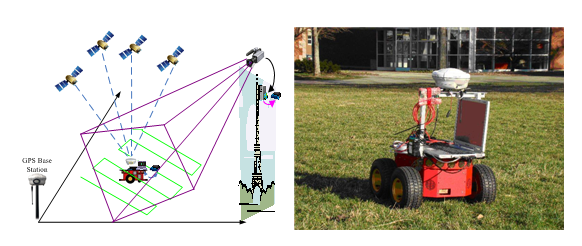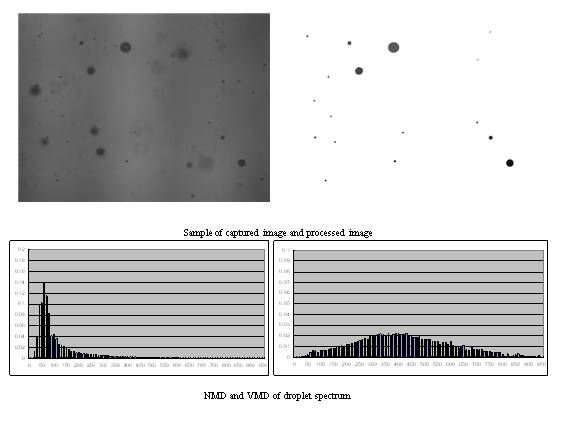1. Engineering Solutions for Biomass Feedstock Production - Pre-harvest Crop Monitoring System
The goal of this research is to monitor energy crops at the pre-harvest condition using near-real-time remote sensing methods. The ground based
remote sensing and unmanned aerial vehicle (UAV) is the promising means for getting high quality data for remote sensing analysis. The challenges
of this research are to adopt the site-specific management; explore the potential of identify the optimum harvesting time (window) and increase the
quality assurance of different biomass feedstock. The biomass yield and energy content are to be compared using remote sensing models.


2. Automatic Ground Control Point Data Control through Autonomous Mobile Robot
In the ground-based high resolution remote sensing system, GCPs are usually artificially marks which are placed in the field manually.
The positions of GCPs are measured using RTK GPS. However, if the number of GCP increases, the data collection process could be
time consuming and labor intensive. Another important concern, the personal operation and the external environment severely impacts
the measurement accuracy of ground reference system.

3. Development of Low Cost Real Time Vegetation Index Measurement Sensor
‘Ag-Eye’ is a tiny image sensor for real time NDVI measurement. Utilizing this RGB CMOS sensor derives accurate
and comparable NDVI value of plants to the high-price multi-spectral camera. The research focused on the adaptation
of the “Ag-Eye” to eliminate the interference of the soil background. The tiny sensor gets the NDVI measurement
either automatically or manually with high accuracy. The features involves in the Ag-Eye: Ultra low cost, 0.3MegaPixels
RGB CMOS sensor; reduce the infections and interference of the soil background to the value of NDVI measurement;
Data storage and transmission capability.

4.
Optic-based droplet measurement system
Measure the properties of droplets spectrum by analyzing images captured by high-speed camera. Ultra-bright LED is adopted as
the light source rather than laser, providing the comparable measurement result at an acceptable cost.
